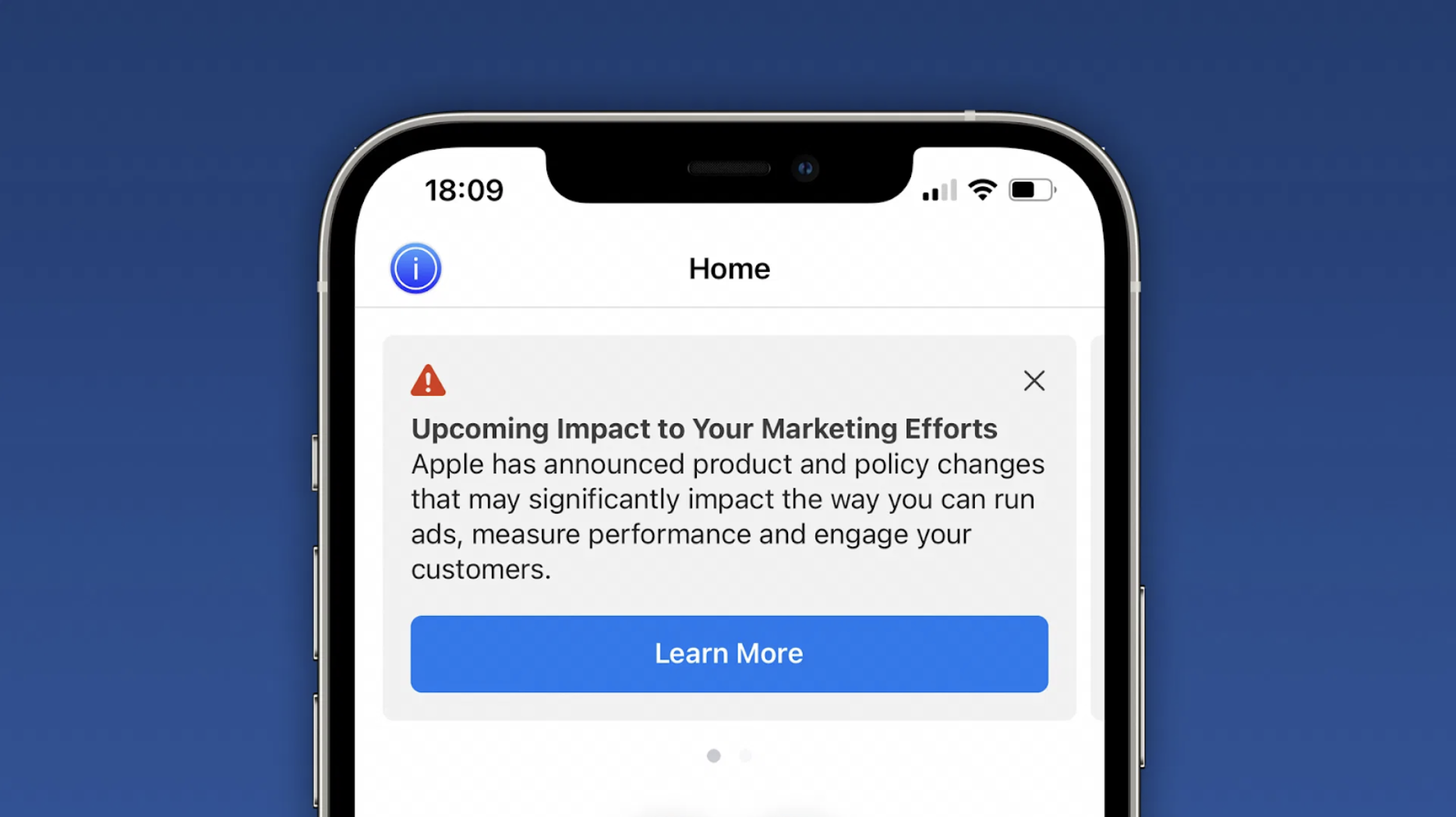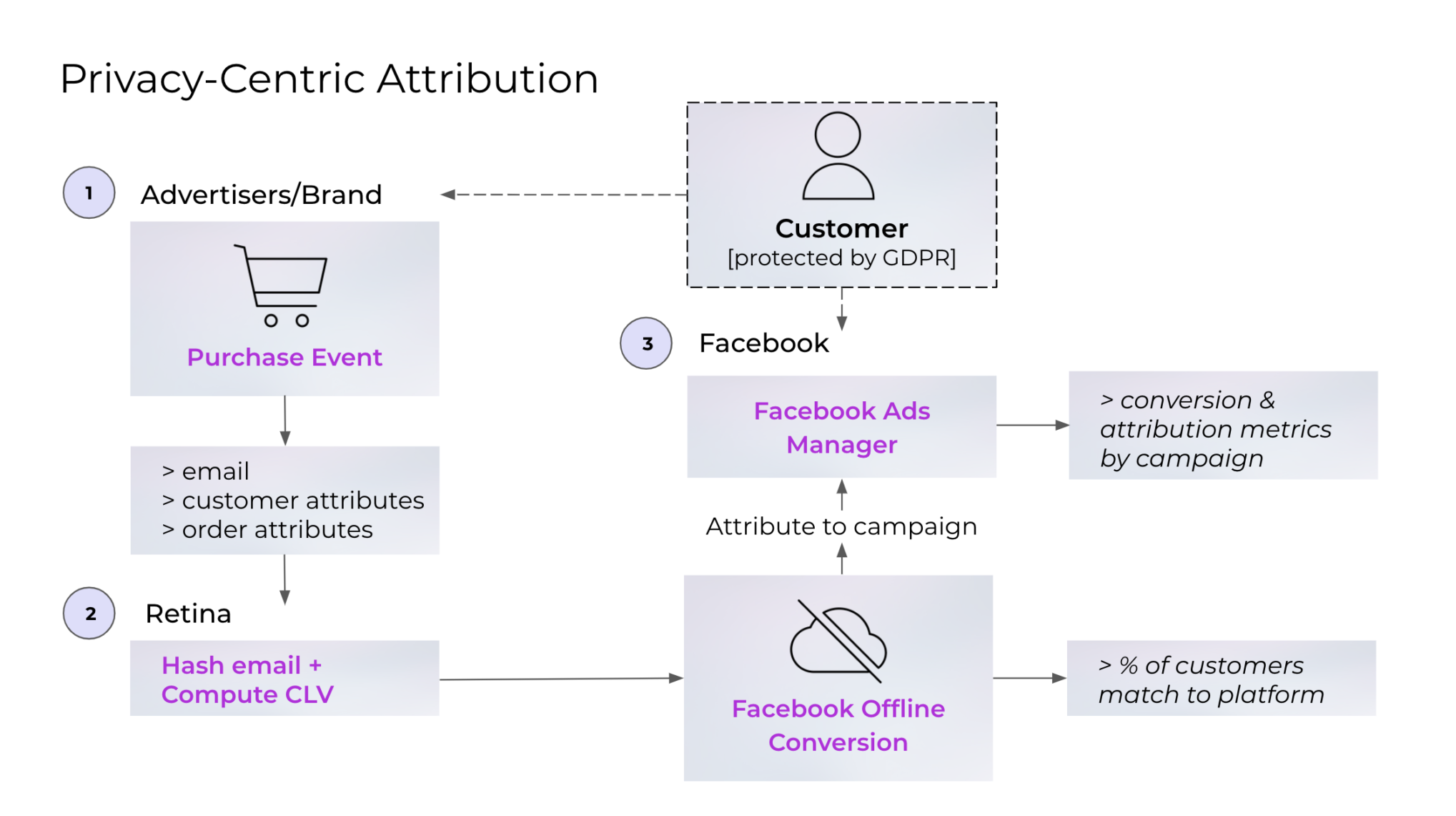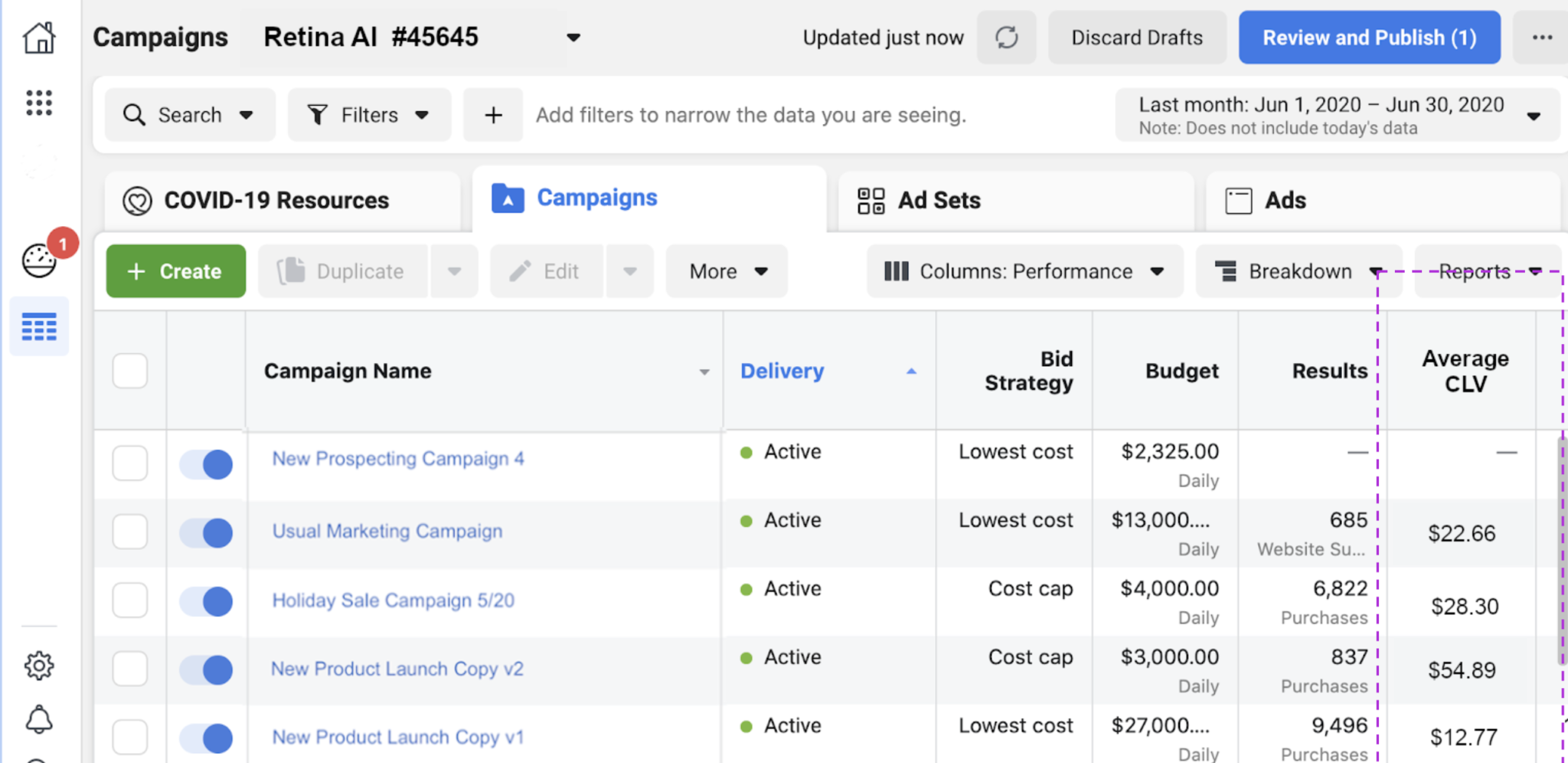Many advertisers have recently received the following notification:

Facebook is facing measurement uncertainty with the loss of Signal. The company is searching for an attribution solution in the face of IDFA from Apple and the loss of third-party cookies. Currently, server-to-server signals are the only available solution, which may work for large enterprises but are much harder to implement for SMBs.
Amid rising customer acquisition costs, Facebook’s advertisers must now also find a solution to address the measurement problem. This problem is especially apparent for brands where ROAS is not measurable on first purchase, like subscription companies.
Fortunately, Retina can solve this problem with existing tools, while providing new value to advertisers with a better understanding of long-term ROAS. Here are the key components:
- End user buys product/installs app and opts into measurement.
- Brand sends the conversion data to Retina.
- Retina hashes any PII (email, phone, address, etc) using a one-way hash and estimates the long term value of the customer that just made a purchase.
- Retina sends the hashed email or PII along with customer lifetime value scores to Facebook using an offline conversion pixel.
- Facebook matches the hashed PII to its user base only when there is a match and reports this back to the advertiser and to Retina.
- Facebook then takes attribution for any of the user events for existing campaigns and surfaces CLV to CAC ratio directly in the ads manager.
- The advertiser can now not only understand what percent of its conversions are on Facebook, but also the CLV to CAC that each Campaign, Ad Set, and Ad ID is driving.

The one-way hashed email
When you build custom audiences in Facebook, the platform can turn an email address into a one-way hashed email. This means that Facebook anonymizes the email in such a way that you can never turn it back into the original email address.
This is the process of taking an email or any other PII and converting it to a hashed-key that cannot be converted back to email. See example below.

You can match one-way hashed emails using custom audiences to see how many of your customers are on Facebook without compromising the identity of your users. With this existing solution, you can target your current customers on Facebook in a privacy-centric way.
One-way hashed emails allow brands to target their customers on Facebook without using personally identifiable information. Even though you won’t know which customers you are targeting specifically, this strategy can still help you understand the percentage of your customers that are on Facebook.
Offline conversions
One problem advertisers run into is how to best track offline conversions, such as an in-store purchase. Consider a grocery store with a loyalty program. If a customer purchases several items in store and scans their loyalty card (or enters a phone number), the store can send that information back to Facebook.
Instead of simply sending the purchaser’s PII like name, phone number, or email, you can again employ the one-way hashed email technique. Send the hashed email along with information about the purchase, such as total spent, items bought, etc. to Facebook.
Finally, you can select an attribution window, such as 60 days, to attribute offline conversions back to online ads. Anyone that makes an in store purchase within 60 days of viewing an ad on Facebook is attributed to that specific campaign and ad.
Measuring attribution
As noted above, you can use one-way hashed emails to track attribution on Facebook for both offline and online events. Whether it’s in-store, on the app, via mobile or desktop, hashed emails are a great solution to track attribution while following privacy restrictions and regulations.
This privacy centric approach to ads measurement allows you to see what percentage of your customers are not only on Facebook, but on other platforms like Google, Pinterest, and more. You can get a clear picture of what percentage of your customer base exists on each of these platforms.
This knowledge helps you understand how your marketing spend on different platforms impacts customer acquisition. For example, let’s say you have 100 customers and you identified that 95 of them are on the Facebook platform. If 50 customers converted from your latest campaign, you can infer that 50% of your business is not driven by Facebook.
Ads measurement is becoming increasingly restricted. The solution above is very privacy centric because it allows customers to opt in or out of tracking through Facebook or with the advertiser directly.
One of the best ways to work with new advertising restrictions is to make the most of your first-party data.
ROAS vs. CLV
When you send a conversion pixel back to Facebook, from an online or offline event, just providing the value is not enough. Often the value is captured over time as the customer comes back for multiple purchases. Consider sending additional information, like the customer-level lifetime value associated with that conversion. The first-party data allows you to get a clearer picture of campaign performance.
If you share order-level data with Facebook, you can get more value by also including the expected lifetime value of the customer. CLV can appear as an additional column within Facebook ads manager.
With this additional level of information, you can look at ROAS from the long-term value of the customer, and not based on first purchase order value.
Conclusion
Facebook, like most other walled-garden ad platforms, is currently searching for a measurement and attribution solution for advertisers. Starting with one-way hashed PII, Retina can solve this problem for both enterprises and SMBs. Retina’s solution is both privacy-centric and provides long-term value for advertisers. By focusing on first-party data to send predictive metrics like customer lifetime value and CLV:CAC ratios back to Facebook, advertisers can understand the long-term value of their customers from the point of first purchase.
